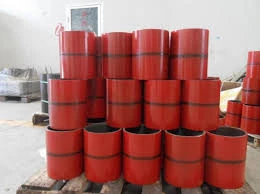- Afrikaans
- Albanian
- Amharic
- Arabic
- Armenian
- Azerbaijani
- Basque
- Belarusian
- Bengali
- Bosnian
- Bulgarian
- Catalan
- Cebuano
- Corsican
- Croatian
- Czech
- Danish
- Dutch
- English
- Esperanto
- Estonian
- Finnish
- French
- Frisian
- Galician
- Georgian
- German
- Greek
- Gujarati
- Haitian Creole
- hausa
- hawaiian
- Hebrew
- Hindi
- Miao
- Hungarian
- Icelandic
- igbo
- Indonesian
- irish
- Italian
- Japanese
- Javanese
- Kannada
- kazakh
- Khmer
- Rwandese
- Korean
- Kurdish
- Kyrgyz
- Lao
- Latin
- Latvian
- Lithuanian
- Luxembourgish
- Macedonian
- Malgashi
- Malay
- Malayalam
- Maltese
- Maori
- Marathi
- Mongolian
- Myanmar
- Nepali
- Norwegian
- Norwegian
- Occitan
- Pashto
- Persian
- Polish
- Portuguese
- Punjabi
- Romanian
- Russian
- Samoan
- Scottish Gaelic
- Serbian
- Sesotho
- Shona
- Sindhi
- Sinhala
- Slovak
- Slovenian
- Somali
- Spanish
- Sundanese
- Swahili
- Swedish
- Tagalog
- Tajik
- Tamil
- Tatar
- Telugu
- Thai
- Turkish
- Turkmen
- Ukrainian
- Urdu
- Uighur
- Uzbek
- Vietnamese
- Welsh
- Bantu
- Yiddish
- Yoruba
- Zulu
Understanding Petroleum Tubing Couplings and Their Importance in Oil Exploration and Production
Understanding Petroleum Tubing Couplings Essential Components in Oil and Gas Operations
In the world of oil and gas extraction, the significance of reliable and efficient equipment cannot be overstated. One critical component in this sector is the petroleum tubing coupling. This seemingly unassuming metallic connection plays a vital role in the safe and effective transportation of petroleum from the wellbore to the surface. In this article, we will explore the purpose, types, and best practices associated with petroleum tubing couplings.
Purpose of Petroleum Tubing Couplings
Petroleum tubing couplings are designed to connect lengths of tubing in production and injection wells. They serve as junction points that provide both mechanical strength and tight seals to prevent leaks. The primary function of these couplings is to ensure that produced hydrocarbons, water, or gas can flow continuously and efficiently from the extraction point to the processing systems.
Moreover, they are essential in maintaining the integrity of the tubing string. In the harsh environments associated with oil and gas extraction, where pressure and temperature fluctuations can be extreme, the couplings must withstand significant forces while preventing leak paths that could lead to environmental hazards and operational inefficiencies.
Types of Petroleum Tubing Couplings
There are several types of petroleum tubing couplings, each designed for specific applications and conditions
.1. EUE Couplings (External Upset Forged) EUE couplings are commonly used in tubing applications. They feature a tapered design that allows for a smooth transition between the tubing and the coupling, facilitating efficient fluid flow. Their robust construction makes them suitable for a variety of pressure settings.
2. IEU Couplings (Internal Upset Forged) Similar to EUE couplings, IEU variants also ensure stability and seal integrity. However, their internal upset design makes them favorable in situations where resistance to high-pressure scenarios is essential.
3. BTC Couplings (Buttress Threaded Connections) These couplings employ buttress threads that allow for high load-bearing capacities while minimizing stress on the tubing. They are particularly effective in deep wells subjected to heavy loads.
petroleum tubing coupling

4. Premium Couplings For high-performance needs, premium couplings offer advanced features such as enhanced sealing capabilities, resistance to fatigue, and better performance under extreme temperatures. These couplings are typically used in challenging environments such as deepwater, high-pressure reservoirs.
Best Practices for Petroleum Tubing Couplings
To ensure the longevity and reliability of petroleum tubing couplings, consider the following best practices
- Material Selection The choice of material plays a crucial role in the performance of tubing couplings. Materials must be corrosion-resistant and capable of withstanding the operational conditions, including temperature and pressure fluctuations.
- Regular Inspections Conducting routine inspections and maintenance can identify potential wear and tear before they lead to failures. Using tools like ultrasonic testing can detect subsurface issues before they escalate.
- Proper Installation Ensuring couplings are installed correctly is vital. Misaligned couplings can lead to stress points that may cause failure. Following the manufacturer's guidelines for torque specifications is imperative.
- Monitoring Systems Implementing monitoring systems that track pressure and temperature variations can provide early warnings of issues related to coupling performance, preventing catastrophic failures.
Conclusion
In conclusion, petroleum tubing couplings are indispensable components in the oil and gas industry that facilitate the safe transport of hydrocarbons. Understanding their types, functions, and the best practices for maintenance can enhance their performance and lifespan, ultimately leading to more efficient and environmentally responsible oil extraction operations. As technologies advance and operational demands increase, focusing on the integrity of these connections will be crucial for the future of petroleum engineering.
-
Tubing Pup Joints: Essential Components for Oil and Gas OperationsNewsJul.10,2025
-
Pup Joints: Essential Components for Reliable Drilling OperationsNewsJul.10,2025
-
Pipe Couplings: Connecting Your World EfficientlyNewsJul.10,2025
-
Mastering Oilfield Operations with Quality Tubing and CasingNewsJul.10,2025
-
High-Quality Casing Couplings for Every NeedNewsJul.10,2025
-
Boost Your Drilling Efficiency with Premium Crossover Tools & Seating NipplesNewsJul.10,2025







